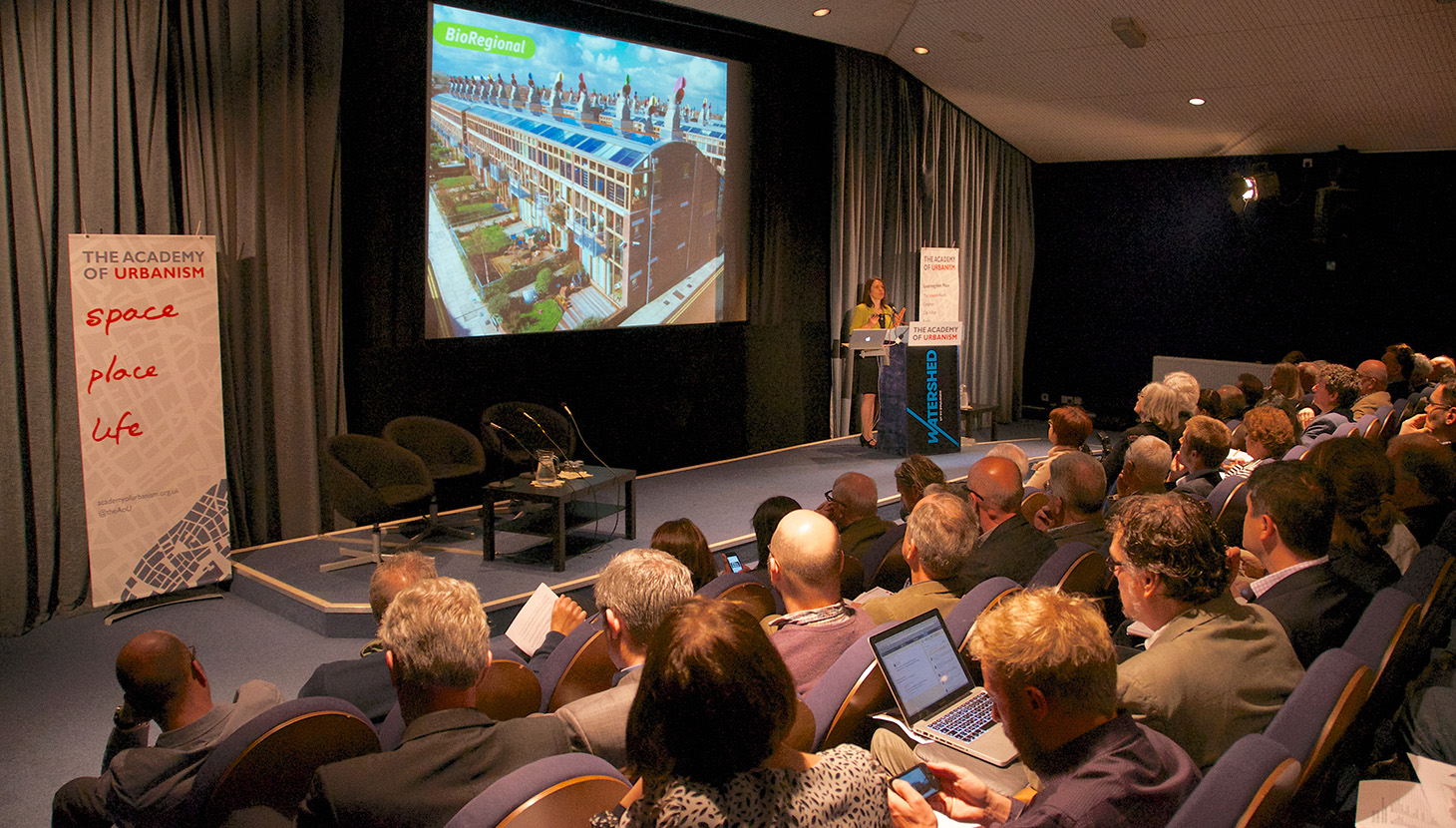 The Academy’s 9th Annual Congress took place in Bristol and looked to explore the theme of greener urbanism. Three days of tours, workshops and talks by some of the world’s leading urbanists produced some compelling learning and discourse on the theme. Below, Young Urbanist Francesca Perry sums up her learning experience:
The Academy’s 9th Annual Congress took place in Bristol and looked to explore the theme of greener urbanism. Three days of tours, workshops and talks by some of the world’s leading urbanists produced some compelling learning and discourse on the theme. Below, Young Urbanist Francesca Perry sums up her learning experience:
“The leader of any great city should encourage invention and enterprise,” George Ferguson announced to a room packed with passionate urbanists. As Mayor of Bristol, spearheading numerous sustainable and community initiatives, this is something that Ferguson has tried to demonstrate in his role, attracting a flurry of media attention in his wake.
Speaking two weeks ago at The Academy of Urbanism’s ‘Towards a Greener Urbanism’ Congress in Bristol, Ferguson described the importance of community engagement, experimentation, making sustainability fun, diminishing fear of change, and doing things together as a city. As our world becomes increasingly urbanised, and strains on our resources reach critical levels, it is key that city leaders like Ferguson kickstart an innovative and a positive approach to sustainable – and inclusive – urbanism.
Alongside fantastic talks from people such as Ferguson, Jaime Lerner, Sue Riddlestone and Wulf Daseking, I attended a workshop focused on food resilience. As part of the Young Urbanists group I co-steer, I have been helping to organise a series of timely events on ‘Imagining the Future of Food in Cities’ – looking at issues of production, access and consumption and how we can collaboratively and sustainably improve our practices of all three. So it was fascinating to dig a little deeper in to the topic, linking this back to the notion of resilience in our cities, towns and neighbourhoods.
Many know the fantastic story of Incredible Edible, a community initiative started in the post-industrial town of Todmorden in West Yorkshire that campaigns for local food and grows it in participatory, accessible and creative ways. Mary Clear, a co-founder of the initiative, is not afraid to do what’s right for the community and for the environment: ‘it’s always better to ask for forgiveness,’ she said of their guerrilla food growing, ‘than to ask for permission.’ Incredible Edible’s tactics have taken seed in a number of communities across UK and Europe, proving their motto: ‘if you eat, you’re in’.
Perhaps it is these kind of creative and communal interventions in city life that Jaime Lerner, ex-Mayor of Brazilian city Curitiba, advocates as ‘urban acupuncture’. Whilst large-scale developments will proliferate, they do not provide all the answers alone and often take years to come to fruition (or simply attain permission); ‘acupuncture’ in the form of meanwhile projects, public space animation or community initiatives can give cities their life and energy that we need to make them truly liveable and form a test bed for wider change, implementing this community-led urbanism on a greater scale. Urban acupuncture projects experiment to demonstrate possible solutions.
The terms ‘green’ and ‘sustainable’ may be already weathered in the dialogue about urbanism, but we must remember why the concepts are so critical: we are struggling to move away from an urbanism of excess and of harm – a way of urban living that threatens our collective future. Instead of a low-density, individualistic and consumption-heavy urban life, we need to strive for a greener, leaner (but not meaner!) urbanism, one that involves us working on mutual solutions that ensure we have a future to look forward to – not only in our cities, but in our towns, villages and countryside too, across the planet. An urbanism that is efficient rather than simply ‘sufficient’.
‘The city is our family portrait, it reflects who we are,’ Lerner proclaimed in his closing speech for the AoU Congress: the more we can begin to think of cities as homes that we need to nurture, of fellow citizens as members of our wider family, the sooner we will collaboratively work towards a more sustainable, resilient urbanism. Think lean, think green – and think together.
This post is also available at Thinking City
Image: Sarah Jackson AoU